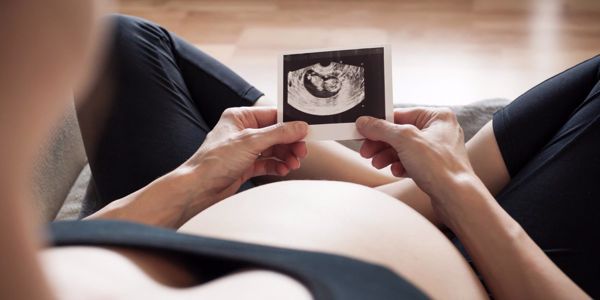March first is Endometriosis Awareness Day, and March is Endometriosis Awareness Month. Endometriosis is when tissue similar to that of the tissue that lines the uterus grows outside the uterus. These growths, though benign, can cause problems for individuals living with them. Endometriosis growths can swell, bleed, block fallopian tubes, form scar tissue, and cause problems in the intestines and bladder. This disease impacts roughly 11 percent of American individuals with uteruses.
Not only is Endometriosis extremely painful, but it can affect fertility and make it more difficult to conceive. Some of the symptoms of Endometriosis are excruciating menstrual cramps, chronic back and pelvic pain, pain during and after sex, intestinal pain, painful bowel movements, bleeding between menstrual periods, infertility, and digestive problems. The mental side effects of Endometriosis are depression, anxiety, and fatigue.
What Causes Endometriosis?
There are no known causes of Endometriosis, but some researchers are studying the connection between Endometriosis and menstrual period flow, genetic and inheritance factors, immune problems, hormones, and prior surgeries to the abdominal area. Because there are no known causes of Endometriosis, there are no ways to prevent it. Currently, most doctors are working to help with symptoms of Endometriosis by putting people on extended-cycle birth control or an IUD.
Fertility and Endometriosis
For those trying to get pregnant, a doctor may prescribe Gonadotropin-Releasing Hormone to cause temporary menopause, which controls Endometriosis and gives a better chance of fertility once off the medication. For severe cases, surgery is another option. While in surgery, they will locate and remove patches of Endometriosis. There are some complementary and alternative medicine options that some individuals have found relief with. The ones that reported the best outcomes were acupuncture, chiropractic care, herbs like a cinnamon twig and licorice root, and supplements like Thiamine, Magnesium, and Omega-3 Fatty Acids. Be sure to talk to your care provider before trying alternative medications. They can impact pharmaceuticals and are not suited for everyone.
Life With Endometriosis
A research study aimed at better understanding the lives of individuals with Endometriosis daily found that most patients reported that their pain interfered with their daily activities and was noted to be moderate to severe for approximately 70 percent of those participating in the study. This research also found that 40 percent of the individuals had a family history of Endometriosis, which supports the idea that it may have genetic ties. Additionally, 90 percent of the individuals in this study reported having problems with fertility, and 48 percent sought infertility treatments for conception. They found that, on average, there were 2.3 surgeries per participant in this study, with a total of 248 surgeries in the group. The limitations reported by this group of individuals were in day-to-day tasks, sexual relationships, work, appetite, exercise, sleeping, and social activities. Of those with children, a little less than half reported significant limitations in how they were able to care for their children.
Although not everyone with Endometriosis has the experiences reported above, it is essential to note that this disease can significantly impact one's daily life. Some individuals have found different ways to manage their Endometriosis, which increases their quality of life. Still, relief is hard to come by for others. If you think you may have Endometriosis, there is a great website called www.speakendo.com which has a questionnaire for help with diagnosing, a guide to conversing with your care provider about Endometriosis, stories from those living with the disease, and more information regarding Endometriosis.
What Does a Diagnosis Look Like?
First, talking with a care provider about all the symptoms you are experiencing, including how they impact your day-to-day activities, is essential. After discussing symptoms, your gynecologist will likely perform a pelvic exam to check for lesions like cysts and scars. They will then run an ultrasound because some ovarian cysts can be seen via ultrasound. Next, a blood test will likely be ordered to rule out other conditions. Sometimes a doctor will suggest a surgical procedure called a Laparoscopy which helps to confirm the diagnosis of Endometriosis and get a sample of the tissues to study. After all, this is finished and Endometriosis has been confirmed, a treatment plan will be made. The treatment plan will focus on how to help with your symptoms of Endometriosis and should include you completely, as you are the professional of your body.
As you experience getting a diagnosis, remember that your gut and your story are essential. It can take multiple care providers and consultations to receive a diagnosis. Although this is not great, know you are not alone on this journey. Early diagnosis and management are the best ways to improve your quality of life. So keep fighting for an answer to your symptoms, and check out resources and care providers on www.speakendo.com.
How Can Loved Ones Support Someone with Endometriosis?
One of the best ways to help someone with a chronic illness is to offer help. For some individuals, simply offering to help is enough. Others need your initiative and to state exactly how you can be helpful. Either way, offering assistance can significantly impact someone’s life. Offer a listening ear. There are often no solutions that someone with Endometriosis has not tried. Being able to vent, cry, and share experiences can be critical in working through the pain and difficulty. Google goes a long way! The more you know, the more that an individual with Endometriosis might feel seen and cared about.
Understanding the basics about Endometriosis before asking a loved one more specific questions about their disease is a great way to lessen the burden of having to teach, so Google it first! Another excellent tip for supporting a loved one is through distraction. When an individual is experiencing a painful flare-up, distraction can be a great way to help them get through it. Distraction can come from funny stories being told over tea, sending funny memes and cute animal videos, watching a favorite movie or tv show, or anything else you might think of. Offering distraction can also be done from far away, which is great for when you do not live close to your loved one with this disease. And finally, continue to raise awareness.
The Future of Endometriosis
Endometriosis needs more research and attention. The more we know, the better we can treat and relieve symptoms. It is also important to note that the more Endometriosis is discussed, the more individuals suffering from symptoms will find support. Let’s use March to bring more attention to this disease impacting so many in our communities.







